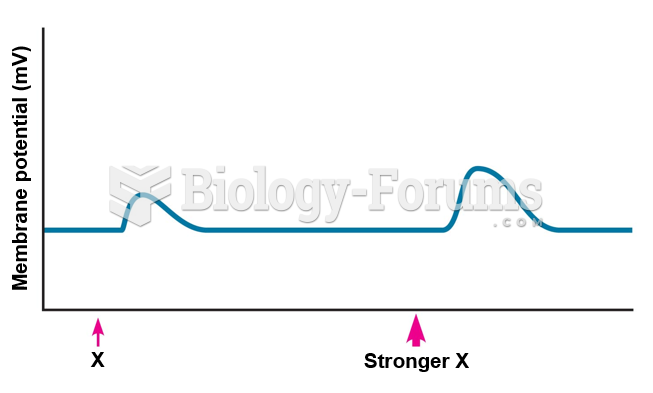|
|
|
Since 1988, the CDC has reported a 99% reduction in bacterial meningitis caused by Haemophilus influenzae, due to the introduction of the vaccine against it.
Everyone has one nostril that is larger than the other.
Only 12 hours after an egg cell is fertilized by a sperm cell, the egg cell starts to divide. As it continues to divide, it moves along the fallopian tube toward the uterus at about 1 inch per day.
The U.S. Pharmacopeia Medication Errors Reporting Program states that approximately 50% of all medication errors involve insulin.
Drugs are in development that may cure asthma and hay fever once and for all. They target leukotrienes, which are known to cause tightening of the air passages in the lungs and increase mucus productions in nasal passages.
 Draping for massage of leg in supine position. A. Lift the leg with one hand, and with the other ...
Draping for massage of leg in supine position. A. Lift the leg with one hand, and with the other ...
 Traction the neck by placing the head, in neutral position facing upward, in one hand. Place the ...
Traction the neck by placing the head, in neutral position facing upward, in one hand. Place the ...
 Alternate kneading and sliding on the upper arm. Knead the upper arm muscles with a hand on each ...
Alternate kneading and sliding on the upper arm. Knead the upper arm muscles with a hand on each ...




